With the help of the rainwater system the water coming off the roof is led down. The principal parts of the rainwater system are horizontal eaves gutters and rainwater downpipes branching off from them. The measurements of gutters and pipes as well as the number of downpipes depends primarily on the amount of water coming off the roof and form of the roof. The location of gutters and pipes should be designed each time specifically so as to provide for the water load to be distributed between parts of the system as evenly as possible, so that in terms of appearance, the gutters and downpipes would be located naturally. Usually pipes are located at the corners of the house and between windows.
Gutters are made of 0,50mm sheets with plastic coat (or zinc-coated tinplate) in lengths as ordered by the customer, but not exceeding 8 meter long parts. At this point it is more reasonable to order gutters exactly with the requested length, in order to avoid cutting the size of the parts later. The length of straight rainwater pipes is 2000mm, the length of pipe with gargoyle is 2500mm. The gutters and pipes are manufactured in colours as suits the client within the range of the entire RR colour catalogue.
Installation
The choice of fastening corbel depends on the form of the eaves soffit:
1. with inside fastening
2. with inside fastening
3. support120 + outside fastening (see also drawing 5)
4. support45 + outside fastening (see also drawing 6)
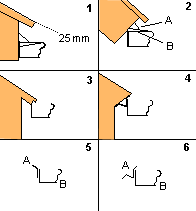
The round gutter supports are fastened at around 800 mm intervals, so that they would support possibly well the joints between the gutters and the joints between the gutter and the pipe. The gutter supports are of two types, internal (drawings 1 and 2) and external. In case of supports (A) (90degrees, 120degrees or 45degrees) first the supports are installed, the external support (B) is fastened to the support (A) with a bolt-washer junction, which enables to impart inclination to the gutter. In case of internal fastening, the work is slightly more voluminous, but the advantage is that the supportive hook is invisible from beneath. The interior support is also less expensive, even though depending on the form of the eaves soffit it sometimes cannot be used. The suitable solution depends on the structure of the eaves soffit, its slope and width.
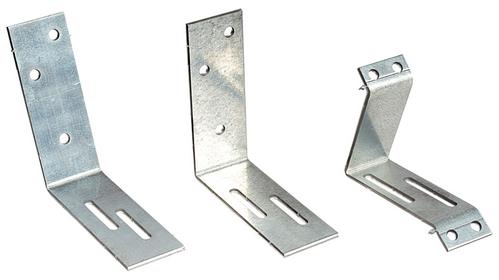
Drawing – supports 120kr, 90kr and 45kr.
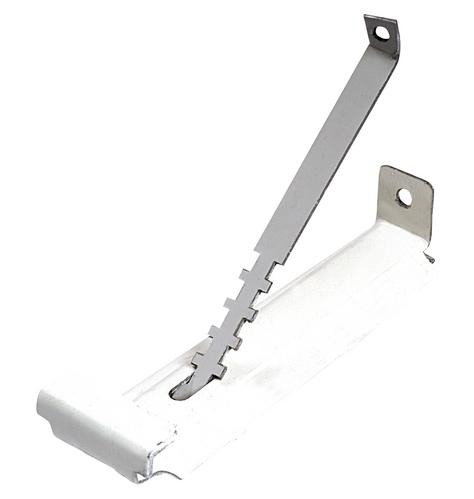
Drawing – interior gutter fastening
The gutter joints are placed and aligned with an overlapping at least 50mm and fixed with rivets and filled with silicon. The same is valid for the joints of pipes and elbows. The water gutter is joined to the pipe with the help of outlet piece (see the drawing below). Use sealing mastics. In the round pipe, a hole is sawn in the bottom of the gutter, where the head piece and elbows are mounted (or pipes). In the rectangular gutter, a cruciform hole is made in the bottom, its edges are bent down and the head piece is mounted. The gutter endings are closed with an end-piece, which is also fastened with rivet fasteners and sealing mastics. The pipes are joined between themselves so as to fix the joints with the wall support. The wall supports should be placed at every joints, but not wider spaced than 2 m. The more specific set of fastening accessories depends on the material of the base, on the distance of the pipe from the wall, etc.
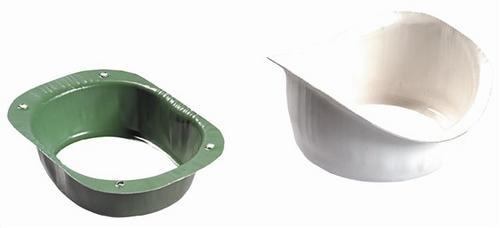
drawing – rectangular head piece
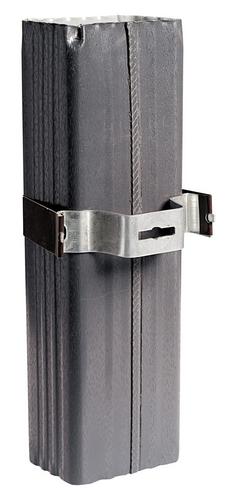
drawing – scheme of pipe fastening rear view
